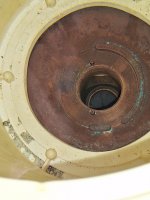- May 28, 2022
- 30
- Pool Size
- 17000
- Surface
- Plaster
- Chlorine
- Salt Water Generator
- SWG Type
- CircuPool RJ-60
Hello,
I have a new Zodiac G3 Pro suction vacuum. I installed it according to the instructions. It moves a bit and then gets stuck in corners. It does not climb the walls, as it is advertised to do. It replaces an older Hayward Dolphin, which also limped around and needed a rebuild. One of the neat things about the Zodiac is it comes with a little pressure gauge to test the suction. They recommend a suction (based on their gauge) of 3 on a scale of 0-6. Mine is reading at the skimmer is zero, so it is insufficient, to say the least. However, there is suction, and it feels strong to my fingers (almost snaps them).
I checked the suction side water lines and detected no leaks. There are no bubbles at the pump or the SWG. The pressure at the filter is 22 psi, about what it has always been.
At the pump, my pumping only has two in-pipes (suction side) and two out-pipes. The in-pipe sources are the pool and the spa, as are the out-pipes. They can also be set as mixed (both spa and pool). I have the in-pipe source set as pool only.
The pool in-pipes come from two sources, including the drain at the bottom and the skimmer. I can't see any way of setting the in-source as skimmer only.
Does anyone have suggestions for increasing my suction at the skimmer? Also, is it possible, my pool wasn't designed for strong suction, and, therefore, a suction vacuum?
BTW, I am a newish pool owner. I bought this home last summer, and I'm gradually upgrading many years of deferred maintenance. Therefore, I'm definitely still learning the details of how the system works and ways of improving its functioning.
Thank you! Greg
I have a new Zodiac G3 Pro suction vacuum. I installed it according to the instructions. It moves a bit and then gets stuck in corners. It does not climb the walls, as it is advertised to do. It replaces an older Hayward Dolphin, which also limped around and needed a rebuild. One of the neat things about the Zodiac is it comes with a little pressure gauge to test the suction. They recommend a suction (based on their gauge) of 3 on a scale of 0-6. Mine is reading at the skimmer is zero, so it is insufficient, to say the least. However, there is suction, and it feels strong to my fingers (almost snaps them).
I checked the suction side water lines and detected no leaks. There are no bubbles at the pump or the SWG. The pressure at the filter is 22 psi, about what it has always been.
At the pump, my pumping only has two in-pipes (suction side) and two out-pipes. The in-pipe sources are the pool and the spa, as are the out-pipes. They can also be set as mixed (both spa and pool). I have the in-pipe source set as pool only.
The pool in-pipes come from two sources, including the drain at the bottom and the skimmer. I can't see any way of setting the in-source as skimmer only.
Does anyone have suggestions for increasing my suction at the skimmer? Also, is it possible, my pool wasn't designed for strong suction, and, therefore, a suction vacuum?
BTW, I am a newish pool owner. I bought this home last summer, and I'm gradually upgrading many years of deferred maintenance. Therefore, I'm definitely still learning the details of how the system works and ways of improving its functioning.
Thank you! Greg


 Maybe post some pics of your valves and the equipment pad. It may help us.
Maybe post some pics of your valves and the equipment pad. It may help us.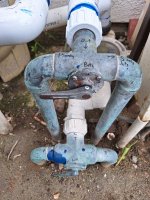
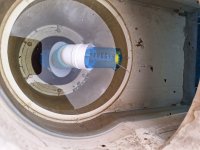
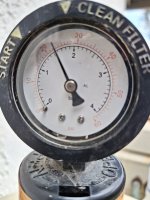
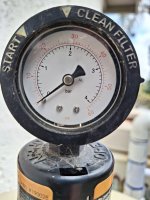
 Let us know if you have any questions along the way. Good luck!
Let us know if you have any questions along the way. Good luck!